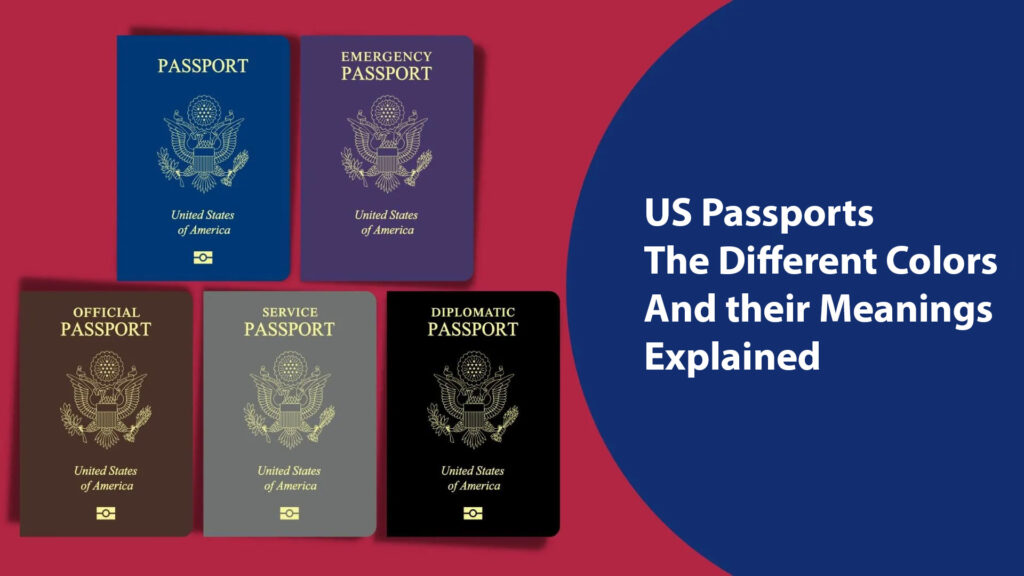Understanding the Colors of U.S. Passports: What They Represent and Why They Matter

US Passports aren’t only blue, but usually when thinking of a passport, the iconic blue cover likely comes to mind. This US passport is often seen as a “gateway to the world”, it’s a symbol of American citizenship and the freedom to travel (to most places). However, did you know that the United States also issues passports in additional colors, each with its own significance. Let’s see a quick walkthrough and the meanings behind the different colors of U.S.-issued passports.
The Blue Passport: Your Key to the World
The blue passport is the most common type issued by the United States. It’s known as the Regular Passport and is available to all U.S. citizens and nationals. Whether you’re jetting off for a quick vacation in Paris, studying abroad in Tokyo, or conducting business in Beijing, this passport is your ticket to international travel. The blue cover symbolizes the American ideals of freedom and opportunity, values that have long defined the nation.
The Black Passport: Diplomacy in Action
For those serving the country in a diplomatic capacity, the United States issues a Diplomatic Passport, easily recognized by its black cover. This passport is reserved for U.S. diplomats, high-ranking government officials, and their dependents. It’s not just a travel document; it’s a symbol of the United States’ commitment to maintaining and fostering international relations. The black cover signifies the serious nature of diplomatic work and the responsibilities that come with representing the U.S. on the global stage.
The Maroon Passport: Duty Calls
The Official Passport, with its maroon (or burgundy) cover, is another specialized passport issued by the United States. This passport is provided to government employees, members of Congress, military personnel, and their dependents when traveling abroad for official government business. It’s a reminder of the essential work that these individuals do in advancing U.S. interests overseas, whether in defense, diplomacy, or development. The maroon cover serves as a badge of service, representing dedication to the country.
The Violet Passport: Emergency Issue (Citizens)
Issuable to citizens abroad in urgent situations, such as the imminent death or funeral of a family member, or when a passport is lost or stolen while overseas. Typically valid for one year from the date of issuance, an emergency passport can be exchanged for a full-term passport.
The Green Passport: Emergency Issue (Resident Aliens)
This document is not a full passport but is issued to permanent resident aliens as a substitute. The re-entry permit ensures their right to re-enter the U.S. and is typically valid for two years. It can also be used by permanent residents who are stateless, unable to obtain a passport for international travel, or who wish to visit a country that their passport does not allow.
Conclusion: Colors that Tell a Story
Each color of a U.S. passport tells a unique story about the individual carrying it and the purpose of their travel. Whether it’s the everyday adventures of American citizens, the crucial diplomatic missions, or the essential duties of government employees, these passports reflect the diverse roles and responsibilities that come with being part of the United States.
The next time you see a U.S. passport, remember that its color carries meaning beyond its surface, representing the values, duties, and protections that come with being an American abroad.
